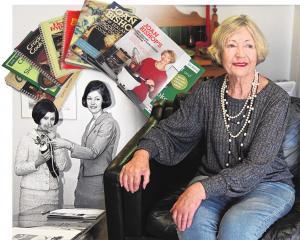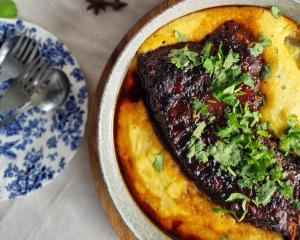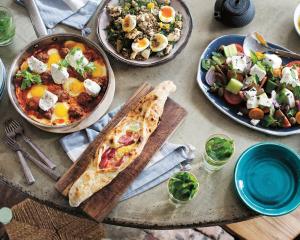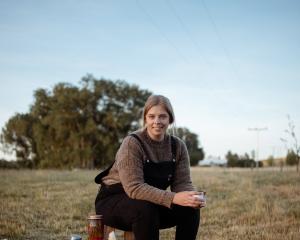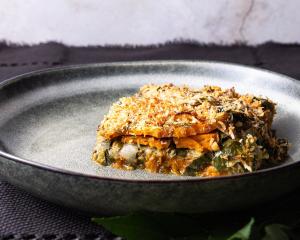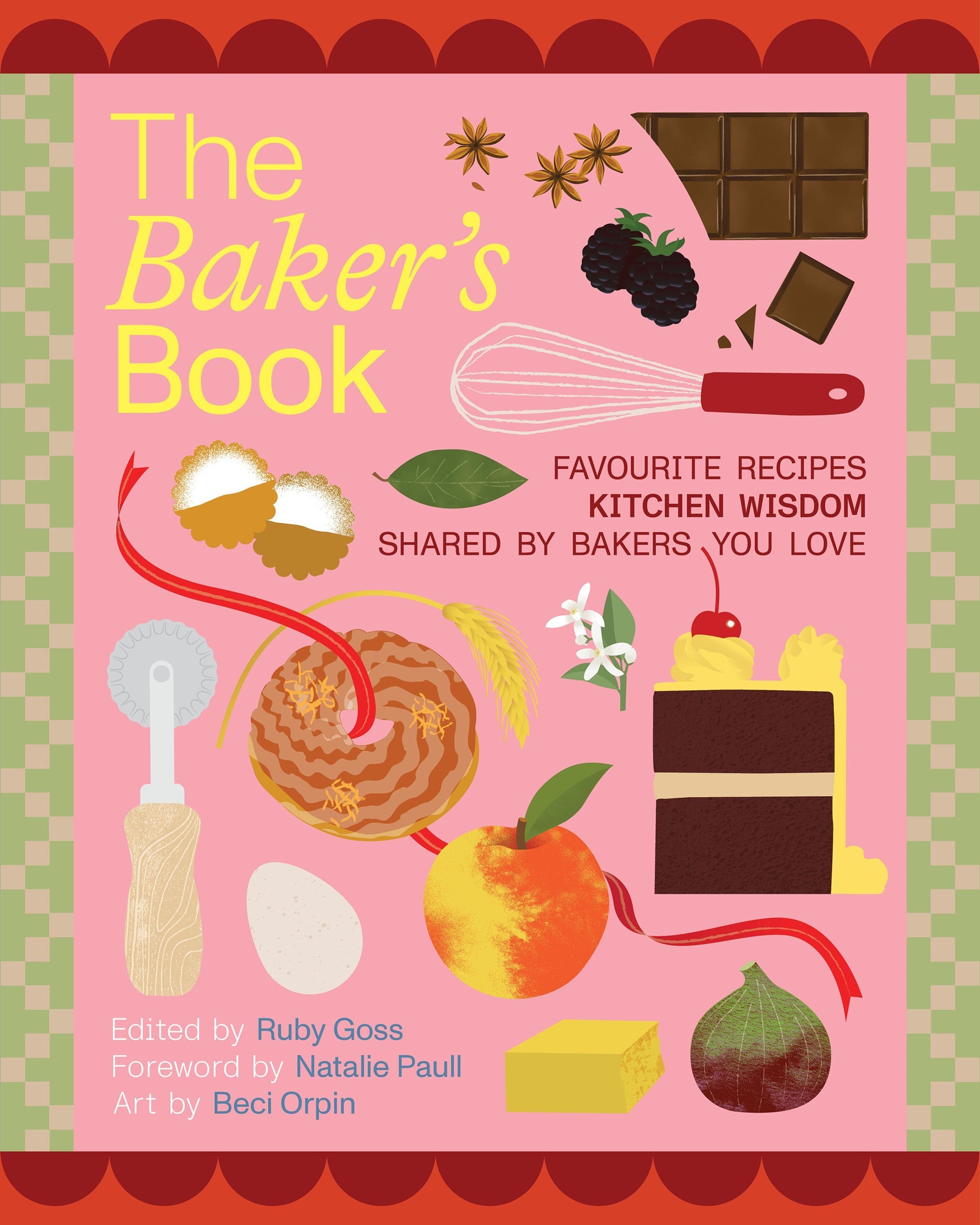
They are the ones whose cakes are beside you to mark a momentous moment, the ones who teach their craft to eager new hands and minds and the ones who write their recipes impeccably and share them in books and online — the bakers.
The Baker’s Book is a collection of recipes from Australian bakers — from pastry chefs, home bakers and community bakeries, including the likes of food writer Sophie Hansen, Masterchef winner Emelia Jackson and judge Darren Purchese, television cook Belinda Jeffery, Tarts Anon’s Gareth Whitton and Tivoli Road Bakery’s Michael James.
Editor Ruby Goss says the idea was to bring together the most inspiring bakers in Australia, share their recipes and also their wisdom, advice and stories.
"It’s a book we imagined could be as inspiring as it was instructive. One that could give you insight into the graft, generosity and diversity of the baking community."
They asked for recipes that excited them, that they wanted to share, in the hope the book would become something people would treasure, like a passed-down community cookbook.
"Most importantly we asked for recipes our bakers enjoyed making."
Goss asked each baker for piece of advice, a lesson learned that changed everything or a handy tip that is always in their back pocket.
"After a lifetime of wilful ignorance, I followed the words of the 35 bakers in these pages and stopped ignoring the "room temperature" note in ingredient lists — and let me tell you, it really did change everything."
Baking, is like life, full of surprises, there are the whims of your ingredients, the temperature of your room, the reliability of your oven. You learn, over time, to work with them, not against them, and to find accomplishment in understanding a little more each day.
"To bake, again and again and again, is to let the time-earned intuition guide you as much as intellect — to relish the moments when things to do turn out as you’d hoped they would as much as learning to let go when they don’t.
"The joy of baking is in the simple act of sharing something you love — and seeing, just for a moment, someone’s face light up as a result."
The book is broken up into chapters based on the type of bakes from small pleasures — biscuits, slices, scones; morning and afternoon teas — cakes, flans, galettes; special occasions — cakes, choux; something savoury — bread, tarts, loaves and time for dessert — tarts, rolls, cheesecake and puddings.
THE BOOK
Images and text from The Baker’s Book edited by Ruby Goss, photography by Rochelle Eagle, illustrations by Beci Orpin. Murdoch Books. RRP $49.99
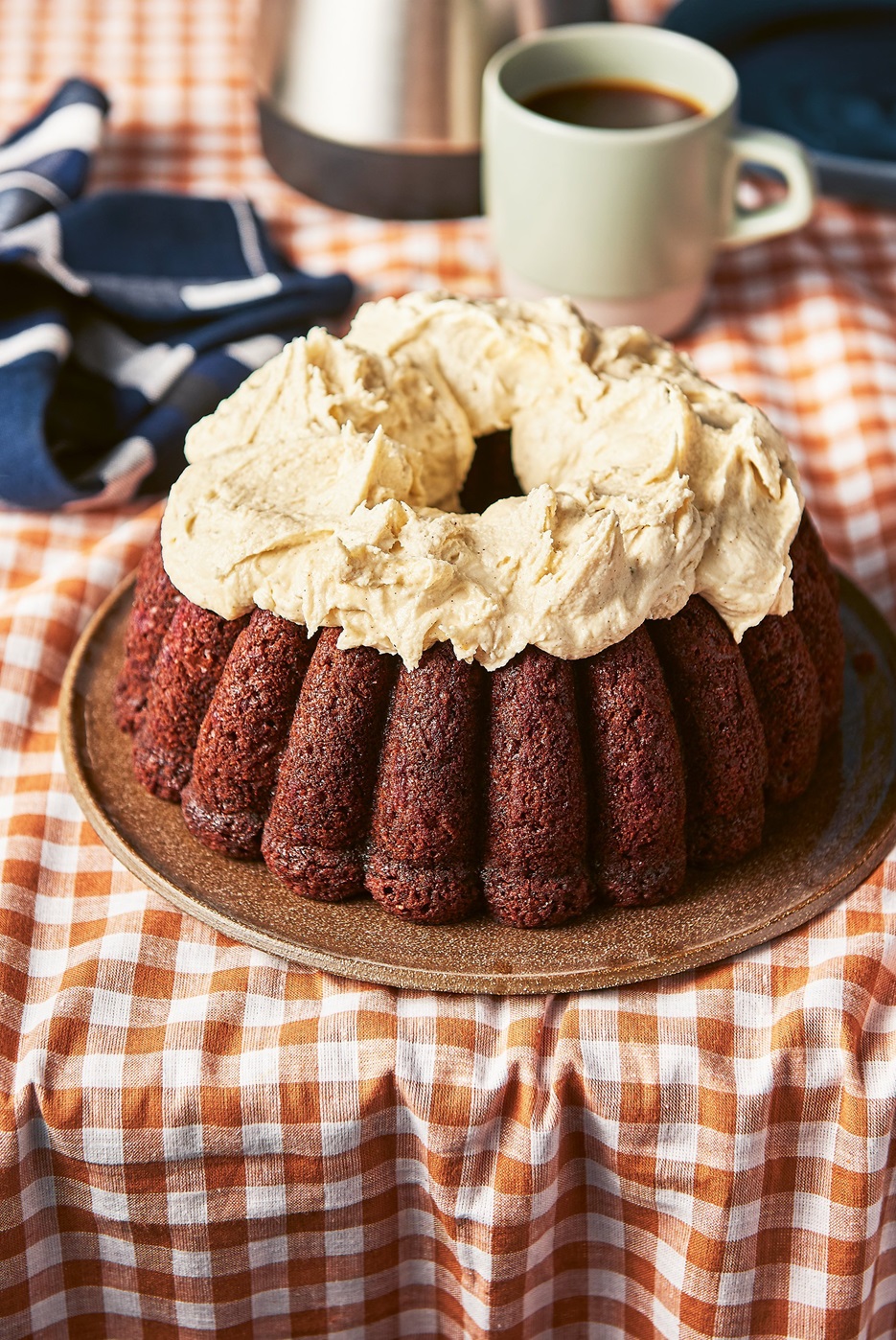 Beetroot and apple cake with wattleseed icing
Beetroot and apple cake with wattleseed icing

by Jo Barrett, chef and co-founder Wildpie, Anglesea, Victoria
I love this cake for its earthiness and moist texture. It’s perfect served with sweet icing, but the dough can also be baked into buns for a different breakfast or morning tea option. Despite the amount of beetroot, you almost can’t pick what the ingredients are once they are combined. I’ve used this recipe in the different places I have worked and in many different forms as an element in a dessert, as a wedding cake, in breakfast hampers and in the bakery. It’s extremely versatile. At different times of the year, replace the beetroot with parsnips or carrots and the cake changes dramatically while remaining delicious.
Serves 12
Special equipment
25cm diameter bundt tin, stand mixer with whisk and paddle attachments
Cake
330g plain (all-purpose) flour
16g baking powder
10g bicarbonate of soda (baking soda)
15g ground cinnamon
30g unsweetened dark cocoa powder
185g egg (from about 3 large eggs)
420g brown sugar
250g extra virgin olive oil
560g peeled and coarsely grated beetroot
220g peeled, cored and grated green apple
Wattleseed icing
125g butter, softened
320g icing (confectioners) sugar, plus extra for dusting
1½ Tbsp pouring cream
1 tsp ground wattleseed*, plus extra for sprinkling
¼ tsp ground cinnamon
Method
Preheat the oven to 160°C conventional (no fan). Lightly grease a 25cm bundt tin with butter or spray with oil, and set aside.
Sift the flour, baking powder, bicarbonate of soda, cinnamon and cocoa powder into a bowl twice to make sure they are well combined. Whisk the egg in a stand mixer with the whisk attachment on medium speed until it begins to foam, then add the brown sugar one-third at a time, whisking until each third is dissolved before adding the next.
When the mixture is thick and glossy, slowly drizzle in the olive oil until it is completely emulsified.
Remove the bowl from the stand mixer and use a metal spoon to gently fold in the grated beetroot and apple. Once they are half folded through, gradually fold in the flour mixture. Fold until just combined, then pour into the prepared bundt tin. Bake for 50 minutes or until a skewer inserted in the centre comes out clean.
Leave in the tin for 15 minutes, then turn out on to a wire rack to cool completely.
For the icing, cream the butter until pale in a stand mixer with the paddle attachment. Add the icing sugar and continue mixing until the sugar dissolves and the mixture is pale and fluffy. Mix in the cream and spices until combined, then set aside until ready to ice. Once the cake has cooled, generously spread the wattleseed icing over the top. If you like, dust with a little extra icing sugar and some extra wattleseed.
* Available in New Zealand online or substitute ground coffee beans in same quantities.
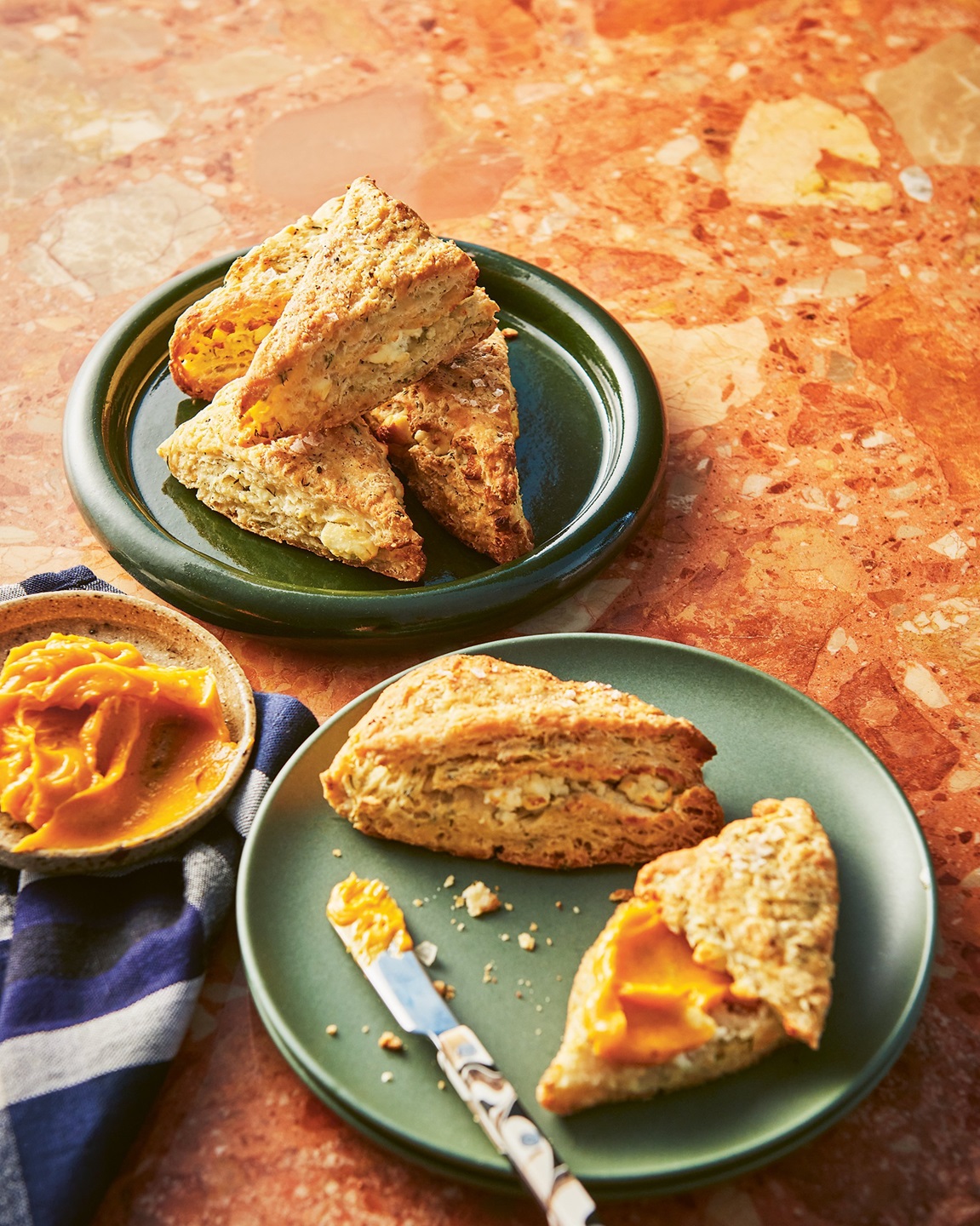 Feta and dill biscuits with harissa honey butter
Feta and dill biscuits with harissa honey butter

by Danielle Alvarez, chef, recipe developer and cookbook author, Sydney
In America (where I’m from), what people call biscuits are similar in their ingredients and makeup to scones, but biscuits are typically served to accompany savoury foods, such as chicken or fried steak with gravy, or sausages for breakfast, while scones are usually served with jam and cream.
I’ve tried to merge the savoury and the sweet in these biscuits, even if they are primarily savoury. The warming harissa heat comes through at the end of the bite and works perfectly with the sweet honey and butter and the salty feta for a truly surprising and utterly delicious combination.
I think these biscuits are best served straight from the oven for breakfast alongside other delights, but you decide where they fit into your day.
Note: The key to delicate and light biscuits is keeping all the ingredients super cold until you bake them, and treating the dough delicately so as not to develop the gluten.
Makes 8
Special equipment
Rolling pin, dough scraper, pastry brush (optional)
Feta and dill biscuits
300g plain (all-purpose) flour, plus extra for dusting
2 tsp baking powder
½ tsp fine sea salt
1 Tbsp sugar
1½ Tbsp chopped fresh dill sprigs
120g butter, frozen
1 tsp white vinegar
170ml chilled water
80g sheep’s milk feta cheese, crumbled
2 Tbsp pouring cream (optional)
Freshly ground black pepper
Sea salt flakes
Harissa honey butter
90g butter, at room temperature
25g honey
15g harissa paste
Pinch of sea salt
Method
Preheat your oven to 200°C fan-forced (220°C conventional) and line a baking tray with baking paper.
For the feta and dill biscuits, whisk together the flour, baking powder, salt, sugar and dill in a large bowl.
Coarsely grate the butter, keeping it as close to frozen as possible. If you feel it has softened, return the grated butter to the freezer to firm up again.
Toss the frozen butter shavings with the dry ingredients.
Add the vinegar to the chilled water, pour on to the butter and flour mix and stir through using a spatula (the mixture will still be quite crumbly).
Tip out on to a lightly floured work surface and knead the dough together a few times to just bring it together (when I say knead, I mean just press it together, rather than traditional bread kneading where you push and pull the dough with the heel of your hand). It should still be very shaggy and messy but mostly holding together.
Dust the top with more flour if needed, then use a rolling pin to roll out to a rectangle about 30 ×20 cm.
Sprinkle the feta on top of the dough, then cut the dough into three equal pieces. Stack those on top of each other and press those pieces together. Use a dough scraper to help push the sides in a bit so everything is flush. Dust your rolling pin with flour and roll your dough stack to 2.5cm tall.
Use a dough scraper or knife to cut the dough into four squares, then cut each square diagonally to give two triangles.
Place the triangles on the baking tray. It’s OK for them to be snug, but they shouldn’t touch. If you have cream, use it to brush the tops. Sprinkle with black pepper and flaky sea salt.
Bake for 20-25 minutes, until the tops are golden brown and the biscuits feel light when you pick them up.
Make the harissa honey butter while the biscuits are baking. Stir together all the ingredients until smooth.
Serve your hot biscuits with the harissa honey butter and enjoy.
 Tiramisukis
Tiramisukis

by Alisha Henderson, pastry chef and founder Sweet Bakes, Melbourne
My criteria for the perfect cookie is one that is thin rather than chunky, and tender and gooey in the centre with buttery crackly edges. These cookies are precisely that and can stand on their own, but tiramisu on top takes them to another decadent level.
Serves 12
Cookie dough
1 Tbsp ground espresso coffee beans
225g butter, at room temperature
80g brown sugar
200g caster (superfine) sugar
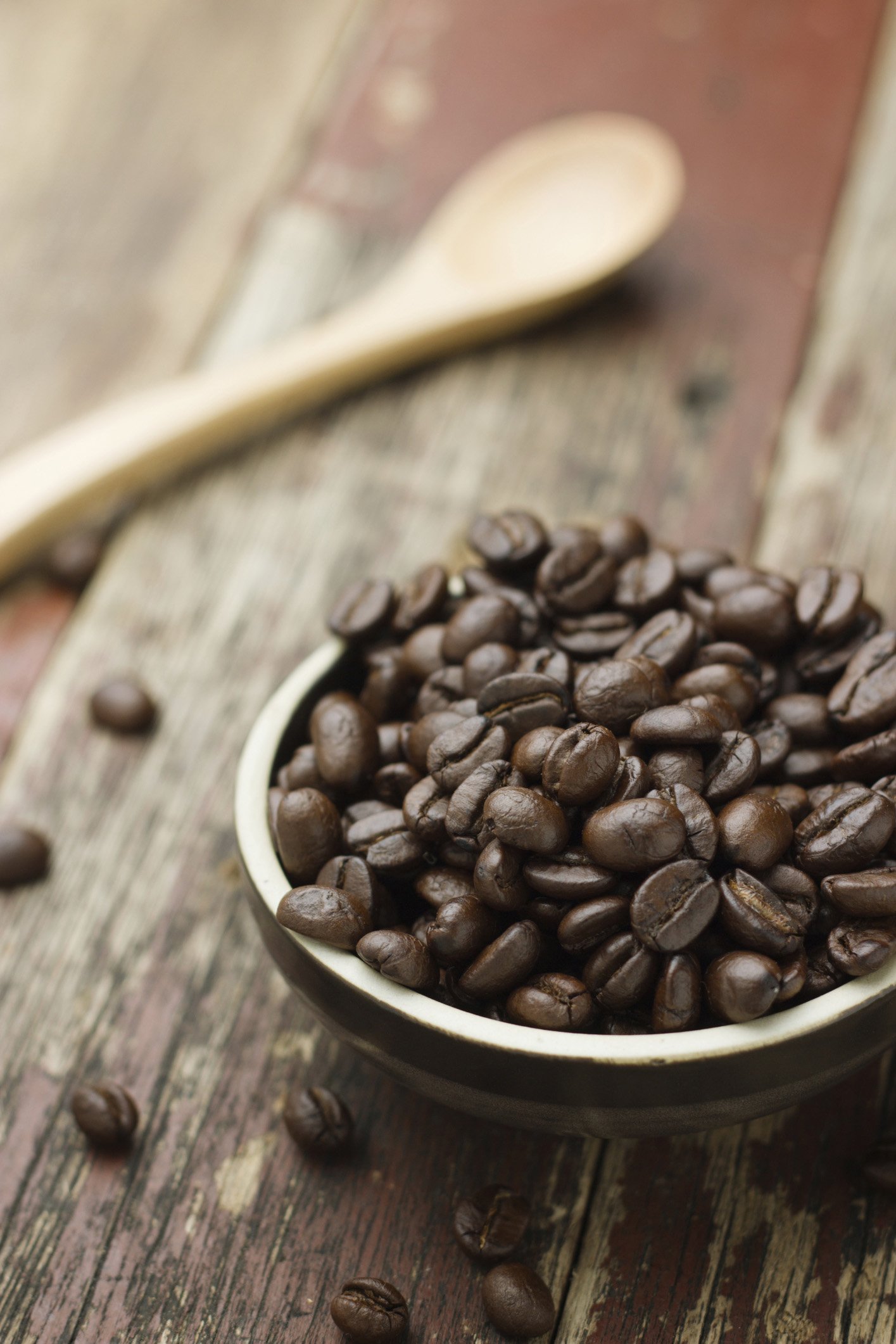
1 Tbsp Kahlua (optional)
250g plain (all-purpose) flour
50g cornflour (cornstarch)
1 tsp salt
2 tsp baking powder
120g dark chocolate chips
Tiramisu frosting
1 Tbsp ground espresso coffee beans
150g mascarpone cheese

1 tsp vanilla extract or vanilla bean paste
1 tsp Kahlua (optional)
To finish
unsweetened cocoa powder, for dusting
Method
For the cookie dough, start by stirring the ground coffee with a little hot water to steep.
In a stand mixer with the paddle attachment, cream the butter and sugars for 4 minutes on medium-high speed. Scrape down the bowl, add the mascarpone and beat for a further 2 minutes. Add the steeped coffee and Kahlua, if using, and beat for 1 minute. Add the flour, cornflour, salt and baking powder and beat on low speed to combine. With the mixer still on low speed, stir the chocolate chips through the mixture. Divide the dough (it’s quite a sticky batter) into 24 pieces about 55g each, roll them into balls and seal in an airtight container. Freeze for at least 12 hours (and up to 2 months). The long resting time ensures a tender cookie in the end. Preheat the oven to 180°C fan-forced and line a baking tray with baking paper. Arrange the cookie balls on the prepared tray about 3cm apart. Bake for 12 minutes, or until the edges are golden brown. Leave the cookies on the tray to cool completely before frosting.
For the tiramisu frosting, again start by stirring the ground coffee with a little hot water to steep.
In a stand mixer with the whisk attachment, beat the mascarpone, icing sugar, steeped coffee, vanilla and Kahlua, if using, on high until stiff. Don’t over beat or the mixture will split. Spread the tiramisu frosting across the tops of the cookies. Finish with a dusting of cocoa powder. The cookies will keep for 2 days in the fridge.



